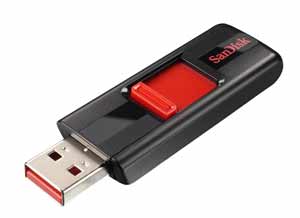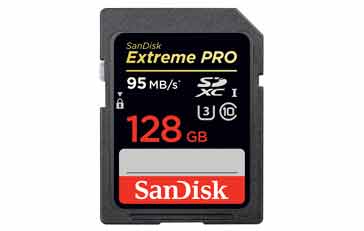What is Flash Memory Technology?
Flash memory was first introduced in the 1980s and since then it has been used in many applications and products: USB memory sticks, Compact Flash cards, SD memory cards, computer non-volatile memory, solid state hard drives and more.
Flash Memory Tutorial Includes:
What is Flash memory technology
How Flash memory works
Flash lifetime & reliability
Memory card buying guide
Memory types:
Memory types & technologies
DRAM
EEPROM
Flash
FRAM
MRAM
Phase change memory
SDRAM
SRAM
Flash memory technology is used for many forms of electronic data storage. Its convenience of use has meant that in recent years its use has increased significantly and it is available in many formats.
Flash memory is a non-volatile form of electronic data storage and as a result it is used in many areas where short and medium term data storage is needed.
Flash memory technology is visible in many forms: everything from the familiar Flash USB memory sticks and camera memory cards like compact Flash cards or CF cards and SD memory cards, right through to applications as computer solid state hard drives where it is replacing the older disc technologies which are slower, less reliable and more fragile.

With its widespread usage, Flash has become one of the more widely used forms of semiconductor memory, and with its use extending from the widely seen memory sticks and camera memory cards etc, into items like solid state hard drives for computers, the technology is being seen even more.
What Is Flash memory?
Flash memory storage is a form of non-volatile memory that was born out of a combination of the traditional EPROM and E2PROM. These two forms of memory are only seen occasionally these days and other forms of memory, including Flash have taken over.
In essence Flash memory uses the same method of programming as the standard EPROM and the erasure method of the E2PROM.
One of the main advantages that flash memory has when compared to EPROM is its ability to be erased electrically.
However it is not possible to erase each cell in a flash memory individually unless a large amount of additional circuitry is added into the chip. This would add significantly to the cost and accordingly most manufacturers dropped this approach in favour of a system whereby the whole chip, or a large part of it is block or flash erased - hence the name.
Today most flash memory chips have selective erasure, allowing parts or sectors of the flash memory to be erased. However any erasure still means that a significant section of the chip has to be erased.

Flash memory development history
Flash memory dates back to around 1980 when the concept was developed at Toshiba by Dr. Fujio Masuoka. It was then later presented at the 1984 IEEE International Electron Devices Meeting, IEDM held in San Francisco, California.
The basic laboratory concept took a few years to develop into a product that could be launched commercially. Intel introduced the first commercial chips onto the market in 1988 - these were NOR based types.
The NOR flash memories had relatively long erase and write times. Toshiba again developed their technology further and were able to announce NAND technology at the 1987 IEDM. This technology, though, still needed further development to take it through to commercial launch.
The advantage of NAND flash was that it had reduced erase and write times and it had a greater storage density.
Flash memory has developed significantly in recent years and is widely used in many applications being found as USB memory sticks, compact Flash cards, SD memory cards and even as Flash hard drives, also called solid state drives in some computers.
How Flash memory works
The technology used to manufacture flash memories is based on EEPROM (electrically erasable programmable read-only memory) chips, which consist of memory banks formed of storing cells disposed in a grid of columns and rows.
The basic Flash memory cell consists of a channel about 1µm long with the source and drain electrodes either end. Above the channel in the Flash memory cell there is a floating gate which is separated from the channel by an exceedingly thin oxide layer which is typically only 100 Å thick. It is the quality of this layer which is crucial to the reliable operation of the memory.
It is the charge storage on the floating gate which is key to the operation of the Flash memory cell.
Flash memory reliability and life
When Flash memory was first introduced it had a relatively short lifetime. The repeated use of the cells caused the memory to degrade. As such Flash memory was only used for a restricted number of read / write cycles.
Nowadays Flash memory technology has been significantly improved and reliability is not the issue that it was. Nevertheless Flash memories to incorporate a scheme of what is termed wear levelling to reduce the impact on cells or areas of the memory that may be subject to high use.
The wear levelling monitors the usage of different areas of the overall memory and seeks to use all areas equally, thereby levelling the usage.
Flash memory advantages & disadvantages
As with any technology there are various advantages and disadvantages. It is necessary to consider all of these when determining the optimum type of memory to be used.
Flash Memory Advantages
- Non-volatile memory
- Easily portable (e.g. USB memory sticks, camera flash cards, etc)
- Mechanically robust
Flash Memory Disadvantages
- Higher cost per bit than hard drives
- Slower than other forms of memory
- Limited number of write / erase cycles
- Data must be erased before new data can be written
- Data typically erased and written in blocks
Obviously when considering the use of Flash memory in any particular application, it is necessary to weigh up the advantages and disadvantages.

Flash memory types
There are two basic types of Flash memory. Although they use the same basic technology, the way they are addressed for reading and writing is slightly different. They two flash memory types are:
- NAND Flash memory: NAND Flash memories have a different structure to NOR memories. This type of flash memory is accessed much like block devices such as hard disks. When NAND Flash memories are to be read, the contents must first be paged into memory-mapped RAM. This makes the presence of a memory management unit essential.
- NOR Flash memory: NOR Flash memory is able to read individual flash memory cells, and as such it behaves like a traditional ROM in this mode. For the erase and write functions, commands are written to the first page of the mapped memory, as defined in "common flash interface" created by Intel.
NAND / NOR tradeoff: NAND Flash memories and NOR Flash memories can be used for different applications. However some systems will use a combination of both types of Flash memory. The NOR memory type is used as ROM and the NAND memory is partitioned with a file system and used as a random access storage area.
Flash memory is a particularly important form of semiconductor memory. It is now widely used and is possibly one of the most important forms of medium term storage.
As mentioned Flash memory can be seen in a variety of forms and uses ranging from Flash memory USB memory sticks to Compact Flash cards used for cameras, SD cards in cameras micro SD cards in phones. In addition to this many other items of electronics can be seen using Flash memory. It is also making significant inroads into the computer hard drive market where solid state hard drives are now widely used.
In view of all is applications, Flash memory technology is one of the key forms of semiconductor memory technology in use today.
 Written by Ian Poole .
Written by Ian Poole .
Experienced electronics engineer and author.
More Electronic Components:
Batteries
Capacitors
Connectors
ADC
DAC
Diodes
FET
Inductors
Memory types
Phototransistor
Quartz crystals
Relays
Resistors
RF connectors
Switches
Surface mount technology
Thyristor
Transformers
Transistor
Unijunction
Valves / Tubes
Return to Components menu . . .




